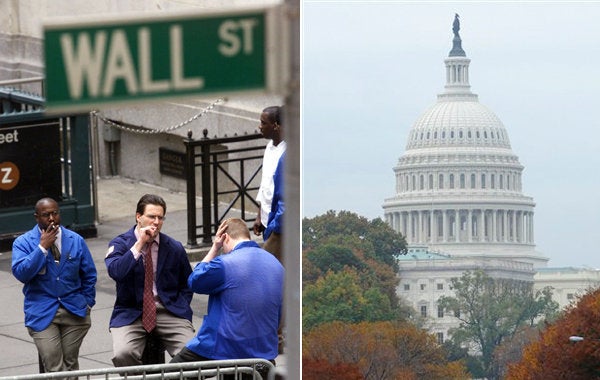
In a finding that is sure to confirm the musings of conspiracy theorists -- or may just prove the obvious to cynics -- a new study details how the financial institutions with the strongest political connections ended up getting the biggest bailouts.
Professors Ran Duchin and Denis Sosyura at the University of Michigan's Ross School of Business found that banks with ties to members of congressional finance committees or whose executives served on Federal Reserve boards were more likely to receive TARP funds (through the Capital Purchase Program) than banks lacking those connections. Also, they found a positive relation between banks' political contributions and lobbying expenditures and the amount of TARP funds received, concluding that "the effect of political influence was strongest for poorly performing banks."
Sosyura said: "The effects of political ties on federal capital investment are strongest for companies with weaker fundamentals, lower liquidity and poorer performance -- which suggests that political ties shift capital allocation towards underperforming institutions."
Though the report only names a handful of banks it's clear that it's aimed at top political donors like Bank of America, Citigroup and Goldman Sachs. Dealbook got this retort from a Wall Street lobbyist:
Scott Talbott, a senior vice president with industry lobbying group The Financial Services Roundtable, said the study was skewed because it did not exclude nine of the largest banks that were "strongly asked" by the government to take bailouts.
Those banks included Goldman Sachs Group, JPMorgan Chase, and Morgan Stanley -- all of which repaid their bailouts in June.
Bank of America and Citigroup more recently announced plans to pay back taxpayers
The report does single out OneUnited Bank, however, and its relationship with key lawmakers, including Rep. Barney Frank (D-Mass.), the chair of the House Financial Services Committeee:
To illustrate the power of the Committee on Financial Services, consider the following example, which appeared in the Wall Street Journal on January 22, 2009.14 In late September 2008, Boston-based OneUnited Bank found its capital depleted and its management
compromised with a cease-and-desist order from the FDIC for poor lending practices and the
abuse of management pay. Yet in mid-December 2008, the bank received $12,063,000 from
CPP.The bank is based in the home state of Rep. Barney Frank, the head of the Financial
Services Committee, who acknowledges that he had included into TARP a provision aimed at
helping this particular bank and recommended to regulators that OneUnited be considered for
capital investment under TARP. The bank's lawyer admitted that he had discussed the bank's
financial situation over the phone not only with Rep. Barney Frank, but also with Rep. Maxine
Waters (a member of the Financial Services Committee and Financial Institutions
Subcommittee), whose husband used to be a OneUnited director.
Here are more details from the study:
The researchers used four variables to measure political influence: 1) seats held by bank executives on the board of directors at any of the 12 Federal Reserve banks or their branches (the Federal Reserve is involved in the initial review of CPP applications from the majority of qualified banks); 2) banks with headquarters located in the district of a U.S. House member serving on the Congressional Committee on Financial Services or its subcommittees on Financial Institutions and Capital Markets (which played a major role in the development of TARP and its amendments); 3) banks' campaign contributions to congressional candidates; and 4) banks' lobbying expenditures.
They found that a board seat at a Federal Reserve Bank was associated with a 31 percent increase in the likelihood of receiving CPP funds, while a bank's connection to a House member on key finance committees was associated with a 26 percent increase, controlling for other bank characteristics such as size and various financial indicators.
READ the report: